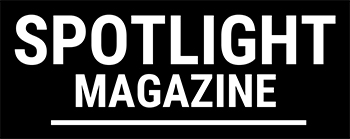
Exactly 70 years ago this month, Sunset Boulevard, the award-winning classic, directed by Billy Wilder, was released amid big changes in Hollywood. At the height of their powers, Hollywood studios had been self-contained, operating as monopolies where production, distribution and exhibition were all in-house, and stars and directors were held by the studio under long-term, restrictive contracts.
The post-war breakup of movie studio monopolies meant a restructuring of the studio system, and the need for a new relationship with movie stars. Sunset Boulevard shined a light on these changes by turning to the past and examining the aftermath of the last major shakeup in the movie industry, when silent stars had been quietly retired with the advent of sound in the late 1920s.
At the centre of Sunset Boulevard’s nostalgic reflection was the character Norma Desmond, a silent star decaying in a fabulously appointed mansion, forgotten by the public and cast aside by the studios that in her heyday relied on her star power to make millions. In a bit of calculated casting, Sunset Boulevard featured Gloria Swanson, queen of the silent screen, in the starring role.
Roles between fiction and reality
Swanson had been the muse of directors like Cecil B. DeMille and Erich von Stroheim in epics and comedies, a countess by marriage and the rumoured lover of Joseph Kennedy. But in the sound era, the extraordinarily famous Swanson was largely reduced to small parts. Sunset Boulevard was her 1950 comeback. The film’s story shows Swanson, as former star Norma, commissioning a script she’s sure will similarly put her back on screen.
Swanson and Norma become inseparable in the film because of their overlapping biographies. But filmmakers also relied on the same strategy of casting to fill other roles by casting recognizable faces in bit parts.
These cameos, where celebrities essentially play themselves in small parts, attest to real-life connections between the fictional Norma Desmond, the aging Gloria Swanson who played her — and a Hollywood populated by stars, many of whom were no longer big screen box-office draws. Some of these names had faded gracefully, while others were victims of past seismic shifts in the studio structure.
Slapstick comedian Buster Keaton, also a star of the silent screen, drops in to play cards; director Cecil B. DeMille, usually behind the scenes, politely turns down Norma’s story pitch. Cameos brought them out of the shadows and onto the screen. Certainly, for fans of silent film, Keaton, charismatic and well-known, seems to burst out of his jarringly small role.
Cameos always part of movie making
Sunset Boulevard didn’t invent the cameo. As I trace in my book Stars and Silhouettes: The History of the Cameo Role in Hollywood, cameos have been part of moviemaking for as long as there have been movie stars. Cameos take advantage of our desire to watch our favourite stars again and again onscreen, allowing films to pack recognizable faces into small spaces in the narrative.
Trailers showing cameos seem full of the stars we want to see now. These cameos might not be recognizable to everyone — in Sunset Boulevard, Buster Keaton’s expressive eyes would stand out only to moviegoers of a certain age, and the face of even a name-brand director would be difficult to pick out of a crowd. Unless you’ve been spending your lockdown developing an appreciation of silent movies, these faces probably aren’t recognizable to a modern viewer either.
We want to see stars in the movies we watch, but we also want to be lost in stories. Too much star power can make it difficult for us to believe or invest in a world populated by famous people. Celebrity cameos solve this problem by working in small doses. Small parts and characters we might only see in a single shot take on the attributes of the actor and his roles.
Outside the boundaries of film
Cameos ask us to think outside the boundaries of the film we are watching and remember all of the details we know about the person we see onscreen. The cameo is disruptive, but it is also rewarding.
In Netflix’s recent Eurovision Song Contest, Will Ferrell’s latest comedy which has undoubtedly provided more accessible quarantine viewing than century-old slapstick, viewers can test their knowledge of manufactured European pop hits as they see the singing competition’s former contestants mingling in cameos at an afterparty.
The cameo may take us out of the narrative if we recognize the cameoist, but it also invites us to participate in the film as we weigh our own memories of the actor against the current role.
As movies change, so do cameos
As how we watch movies has changed, so have cameos. In 1950, viewers couldn’t watch reruns on TV, and they certainly weren’t streaming videos on demand, checking up on the credits in IMDb or catching highlights on YouTube.
The cameos in Sunset Boulevard provided a nudge to remember, but the spiral of attention that cameos can now introduce are much more complex, spinning a web of remembrance and anticipation. Playing with reality and fiction, they make a game as we manage our expectations about how the celebrity will act based on past performances and real-world status.
Will they stand out as expected, as when former Eurovision contestant Conchita Wurst sings in a trademark beard in Eurovision Song Contest, or will they recede into the background for all but those in the know, like Mister Rogers’ widow in A Beautiful Day in the Neighborhood?
Recognizing cameos makes us as viewers feel we have a part in creating the film’s story, as we confirm the place of both the actor and ourselves in pop culture.
You don’t need to know old Hollywood to appreciate Sunset Boulevard and its story of struggle in the face of changing economic realities. Nevertheless, a viewer with an eye for old faces is confronted with a playful jolt of recognition when she realizes these bit parts are no mere extras.
Cameos continue to be exciting to viewers today, rewarding us for our knowledge of the public world, whether it is gathered from gossip blogs, political news coverage or a lifetime of late-night movie watching.
By: Joceline Andersen
Assistant Teaching Professor in Communication and English, Thompson Rivers University
This post was originally published at The Conversation.


